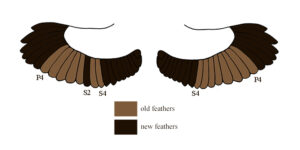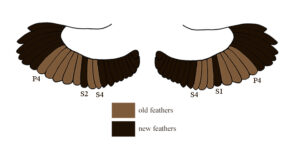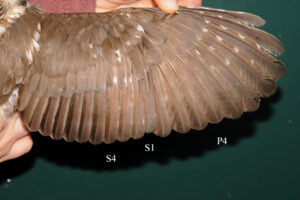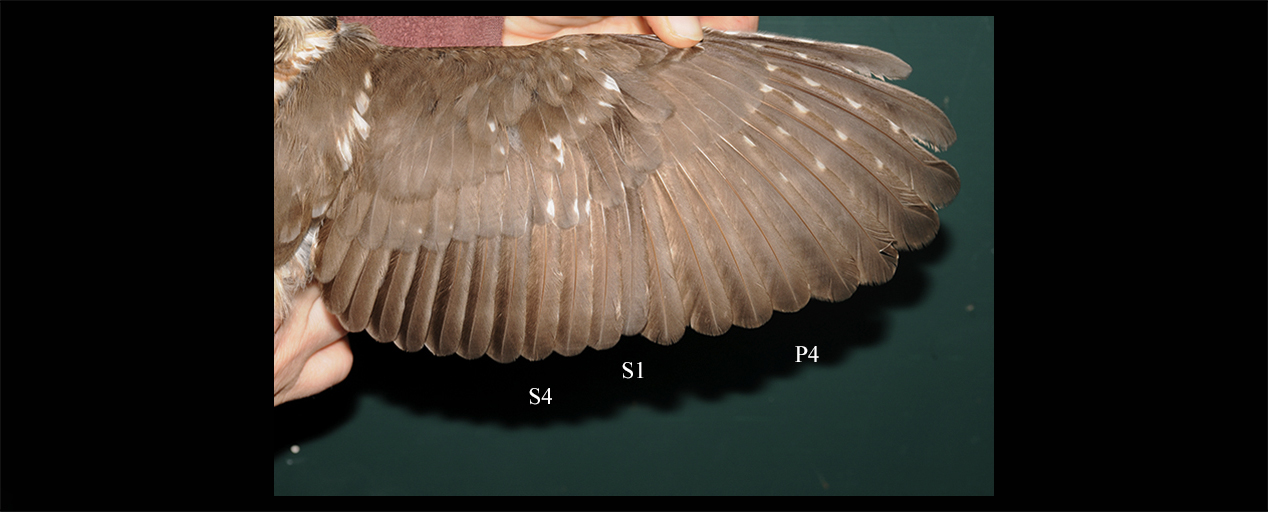After experiencing a nice stretch of productive weather conditions prior to our last post, the recent weather patterns have regularly slowed down migration, if not shut us down altogether. That said, we did have a few windows when Northern Saw-whet Owls were on the move between periods of high winds and snow. Most notably, we caught 28 saw-whets on the night of March 30. Surprisingly, six of those 24 were birds that were already banded. Five of the previously banded birds were originally banded at other sites; the other was one banded at WPBO as a juvenile last summer. Neither one of us can remember catching more than five previously banded birds in a night, so having six in a night when just 24 total owls were captured was unexpected. Not unexpected is the fact that we did not band any Long-eared Owls (LEOW) since our last post. Although we have already banded 14 LEOW this spring, it is not uncommon for them to arrive and then be absent for a week or so before the migration kicks in. We have come to think of the first LEOW that arrive in the spring as advanced scouts for the bulk of the migrants that will find their way to Whitefish Point. To date, we have banded 163 saw-whets, 14 long-eareds, and recaptured 16 previously banded saw-whets.
We know that some banders from other sites follow WPBO’s social media posts, as we follow theirs. We thought some of them might find one of our recent Northern Saw-whet Owl (NSWO) recaptures of interest. Nova coauthored a paper published in the Journal of Raptor Research on molt patterns of NSWO in 2019. One of the things shared in her paper is that older NSWO can show molt pattern very similar to those shown by SY/TY birds. It is not uncommon for an NSWO that has molted once to have a new feather within the block of retained feathers. We most typically see that new feather in the inner secondaries. For example, if an NSWO has retained P5-S7, it is not uncommon for S6 to be a new feather within the retained block. What we did not know is that if P1 or S1 is a new feather within the block of retained feathers, it is likely an older bird. Since she and her coauthors figured this out, we have had a handful of recaptures of known 4Y/5Y birds that have shown the SY/TY molt pattern, with the exception that at least one wing had a new P1 or S1. One of our recent recaptures was a perfect example of this. We originally banded it as an SY/TY with a new feather within the block on one wing and recaptured it as a known 4Y/5Y with new feathers within the block on both wings.
We don’t have photos of this individual from the original banding, but we generated the below graphic from the molt data we recorded.

The molt from the original capture May 2019 as an SY/TY. The retained block starts at P4 and S4 on both wings, but S2 is new on the left wing.
The molt pattern this spring, after having completed two more molts was nearly identical (graphic below). The one exception is that the right S1 is new, indicating that it is older than an SY/TY NSWO.

The molt pattern this spring, after having completed two more molts was nearly identical to that shown in spring 2019. The one exception is that the right S1 is new.
This bird also showed subtle contrast between the new feathers and the retained feathers. The molt pattern in the photo below is shown in the graphic directly above.

A photo of the right wing of the NSWO as a known 4Y/5Y. The retained block starts at P4 and S4, but S1 is new.
There can always be exceptions to rules when it comes to birds and molt, but it has been very rewarding to have multiple recaptures of known age birds show molt patterns matching those new findings described in Nova’s paper.
2021 Spring Owl Banders
Chris Neri & Nova Mackentley
You can read Chris and Nova’s weekly blog post and follow WPBO’s social media (Facebook, Instagram, and Twitter) for owl banding highlights this season.
Owl Banding Presentations — We apologize, but live education demonstrations of our owl banding program will not be offered in 2021 due to COVID-related risks and restrictions.
If you visit WPBO, please practice social distancing while doing so. Although not required, we encourage you to wear masks if you are in close proximity to other people, even if outdoors. You may read the full 2021 COVID-19 Updates for Michigan Audubon and Whitefish Point Bird Observatory here.




